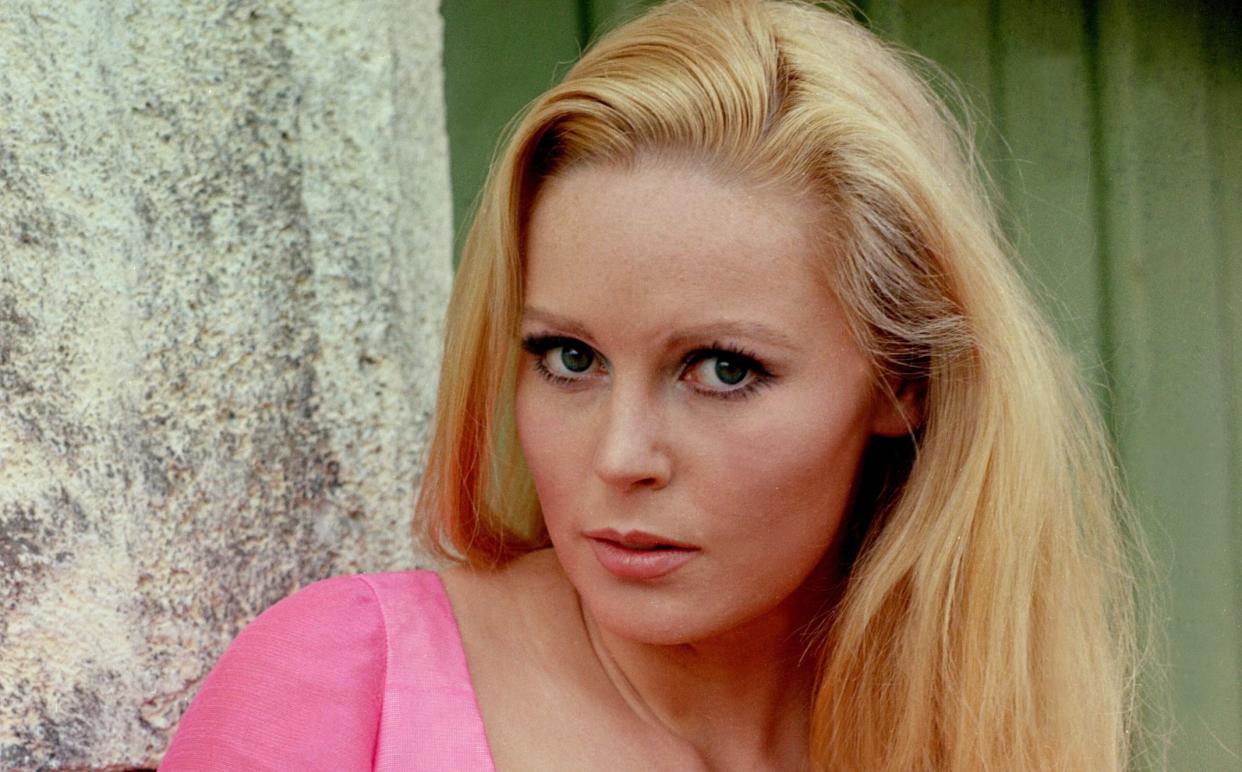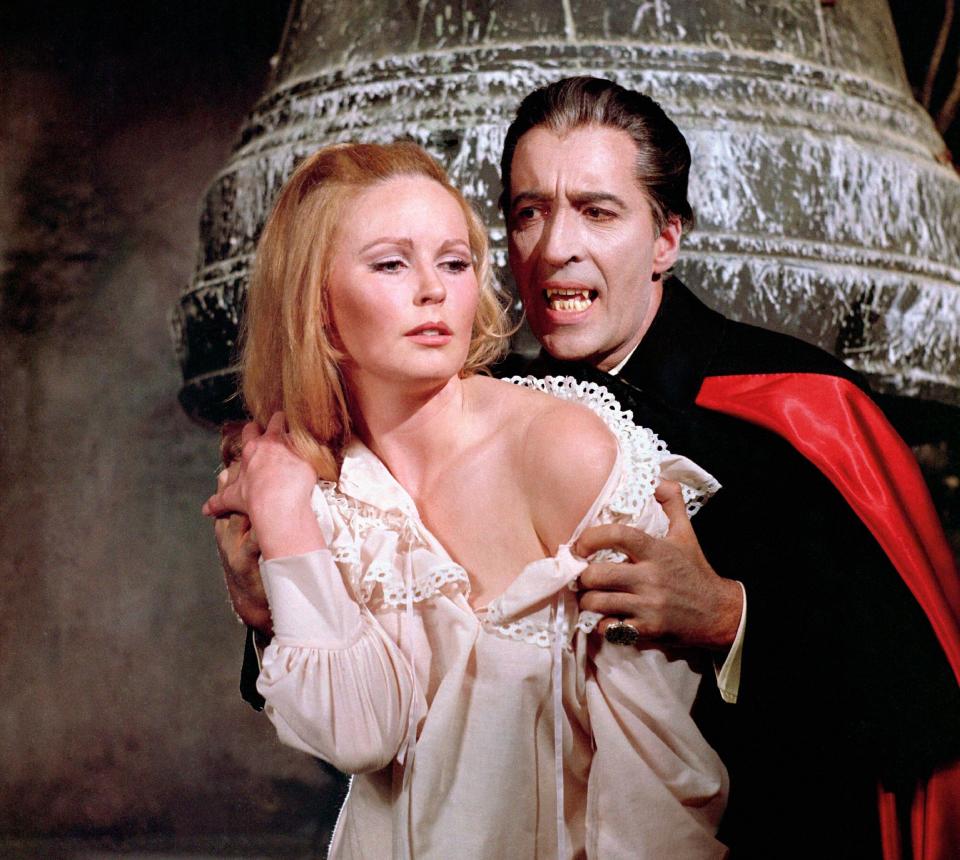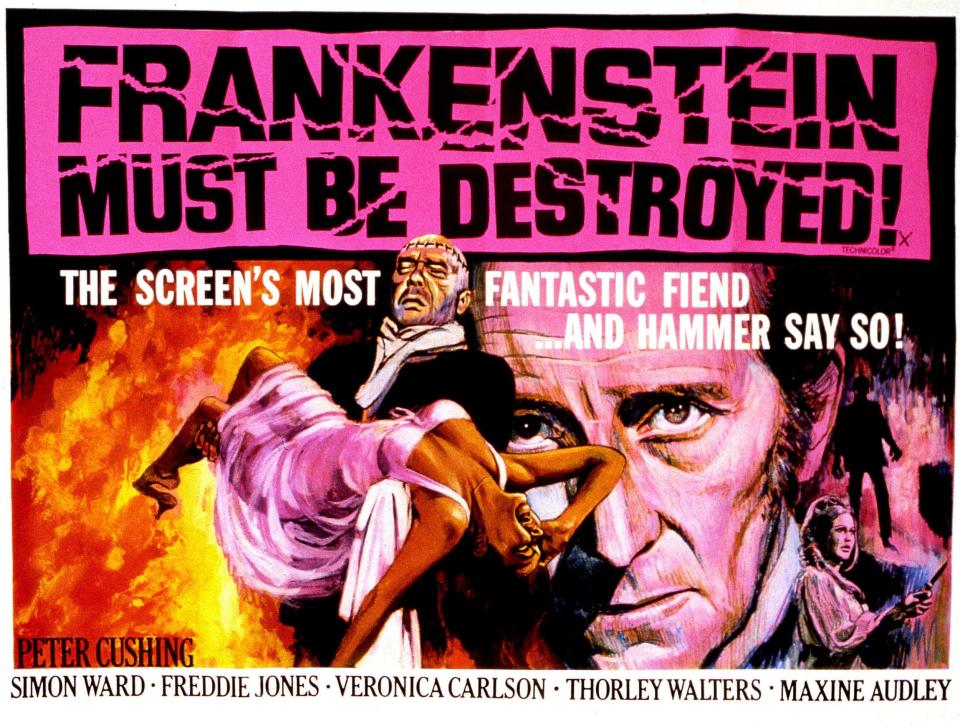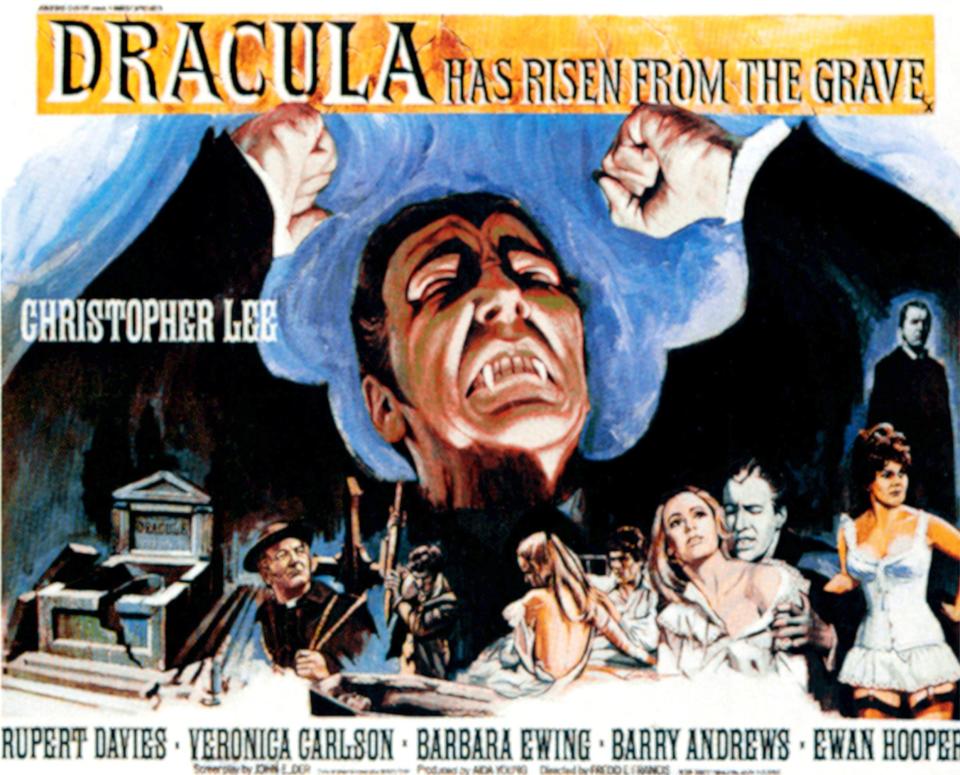Veronica Carlson, actress-model who was a leading ‘scream goddess’ during the golden age of Hammer horror films – obituary

Veronica Carlson, who has died aged 77, was one of the most highly regarded actresses in the horror genre, with a voluptuous bikini-clad allure that earned her a contract with the Hammer studio but confined her to sexualised victim roles in Dracula and Frankenstein films.
One of Hammer’s original “scream goddesses” who terrified and titillated audiences during the 1960s and 1970s, Veronica Carlson was hailed as Dracula’s most beautiful victim. But she was reluctant to be typecast as one of the statuesque “Hammazons” who, as the critics never stopped noting, put the “vamp” into vampire in her screen encounters with the caped count.

She appeared in the inevitably skimpy costume alongside Christopher Lee, perhaps the ultimate Dracula, in Hammer’s biggest money-spinner at the time, Dracula Has Risen from the Grave (1968; opposite the studio’s other big star Peter Cushing in Frankenstein Must Be Destroyed (1969); and with Ralph Bates as Baron Frankenstein in The Horror of Frankenstein (1970).
Cast as the hapless Maria in Dracula Has Risen from the Grave, directed by Freddie Francis (the Oscar-winning cinematographer of Sons and Lovers, and Glory), she fell prey to the vampire’s fangs but survived to see the count impaled on a large cross.
“I learnt lots of strange things,” she remembered, “especially about blood. There were two kinds of stage blood: Max Factor, which looked very real and stained permanently, and ICI, which was a slightly less authentic colour but could be washed out.”

In Frankenstein Must Be Destroyed (1969), considered one of the unsung masterpieces of the genre and directed by Terence Fisher, she was Anna, brutalised and blackmailed into assisting Dr Frankenstein transplant the brain of a mentally ill colleague (Freddie Jones) into someone else’s head.
“The very first day of shooting involved killing me on the cellar stairs,” she recalled in 2001. “I was all dressed for the role, and Terry Fisher was discussing how I should be killed – which was slightly unsettling as I had not met either of them properly.”
Near the end of filming, a Hammer executive decided the action need to be “sexed up” for American audiences and insisted on adding a scene of Peter Cushing’s Dr Frankenstein raping Anna, but Cushing objected to it as gratuitous.
In his characteristically gentlemanly way, he apologised to Veronica Carlson on set and prevailed on the director to make the sequence shorter and less explicit. In the end, the scene was not used in the US release, but its inclusion in the British version upset and alienated her and she only made the sequel The Horror of Frankenstein (in which she was chased by the monster played by the future Darth Vader, Dave Prowse) to fulfil her contract.
Again with Peter Cushing, she appeared as a young 1920s flapper in her fourth horror film The Ghoul (1975), a piece of hokum set in the obligatory fog-shrouded mansion. It was to be her last horror role for nearly 20 years.
“When I look back at my Hammer days,” Veronica Carlson later explained, “I always think how pathetic I was. I was thrilled to be cast in the films, but being a nice middle-class girl, I refused to do anything too revealing. They wanted to undo my dress and get a shot of my back. The cut of the dress meant I couldn’t wear a bra and I pleaded with them to do it ‘tastefully’. It makes me blush to think about it.”
She appeared in two spoofs with David Niven, Old Dracula (1974, aka Vampira), and as an uncredited tall blonde in Casino Royale (1967), tilting at the James Bond franchise.
The daughter of an RAF squadron leader who later helped to re-design the Vanwall racing car gearbox, she was born Veronica Mary Glazer on September 18 1944 in York and had a peripatetic childhood, starting in West Germany, where her father was stationed.
She attended Thetford Girls’ School and although she had always hankered to act, enrolled at her parents’ insistence at High Wycombe College of Art and Technology, where she studied art and took part in productions.

After being cast in a few minor parts on television and in films, making a fleeting uncredited debut in The Magnificent Two (1967) with Morecambe and Wise, she was spotted in a newspaper “glamour” shot by the head of Hammer Films, James Carreras, who offered her a role opposite Christopher Lee in Dracula Has Risen from the Grave.
During shooting she became the first commission for the Dutch-born celebrity photographer Dick Polak, who borrowed a friend’s Leica and took the blonde ingenue to Brompton cemetery “where I dressed her in a negligée, draped her over some crazy Victorian gravestone and photographed her in infra-red. Basically. I didn’t have a clue what I was doing.”
The image set up Polak as a successful photographer on the London “scene” and led to repeated bookings for Veronica Carlson as a newspaper model.
During the 1970s she made numerous television appearances, with Des O’Connor and in two short-lived drama series – Hine (ATV, 1971) starring Barrie Ingham as an arms dealer; and as Wallis Ackroyd, a secretary from Scunthorpe, in Spyder’s Web (ITV, 1972). She also featured in episodes of Department S, The Saint and Randall and Hopkirk (Deceased).
She began to worry about the greater sex and nudity content in films by this time, “and I just didn’t want to be a part of it”. In 1994 she made a late comeback as a mad psychiatrist in Black Easter.
By modern lights the cheesy fare served up by Hammer in her heyday seemed, to many, unremarkable. “Watching these films now,” Julie Burchill observed in 1994, “with totally 1960s chicks such as Veronica Carlson and [the actress] Valerie Leon out for the Count, Wella’d hair tumbling down and Wonderbra’d bosoms heaving, the films look like nothing so much as home movies of Pan’s People having a larky romp through a churchyard during their coffee break on a particularly slow day at Top of the Pops.”
She went into semi-retirement after marrying and moving to the US, where she worked as a professional artist. “My life now is fabulous,” she told the Daily Mail in 1997, “but just occasionally, when I’m cleaning the house, I look back at my Hammer films and wish that I had carried on.”
Veronica Carlson re-emerged to star in the 2019 horror film House of the Gorgon, alongside fellow Hammer stars Caroline Munro, Martine Beswick and Christopher Neame. She was due to appear as Lady Whitehouse in The Rectory, currently in pre-production, according to the IMDb website.
She was a frequent and popular guest at horror film and monster conventions.
Veronica Carlson married, in 1974, Sydney Love; they had a daughter and two sons.
Veronica Carlson, born September 18 1944, died February 27 2022

 Yahoo News
Yahoo News 